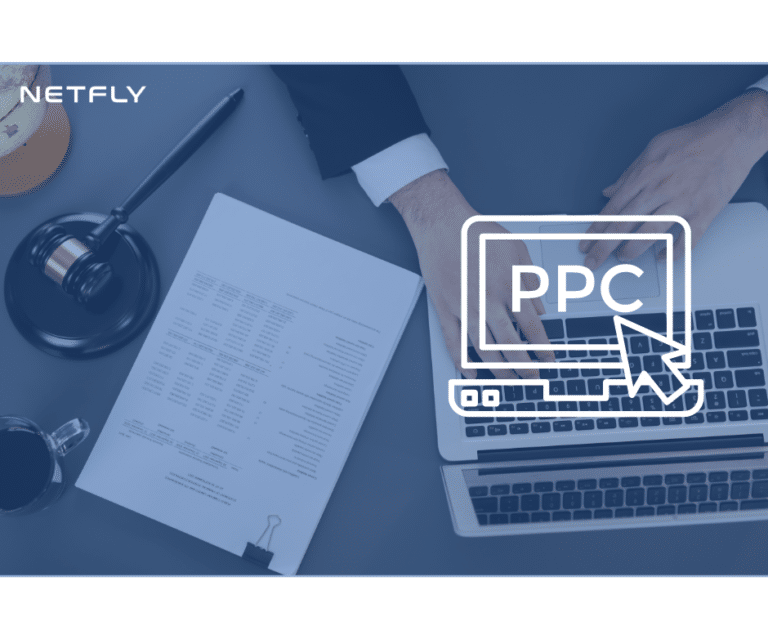As you commence on the journey of accelerating your law firm’s growth through strategic business development and growth planning, you will find yourself at a pivotal crossroads where decisions about the future of your firm must be made. Understanding the current landscape is just the beginning; setting clear objectives and crafting tailored strategies are key components. But what lies beyond these initial steps? How can you navigate the complexities of market trends, competition, and digital channels to truly propel your firm towards sustained growth and success?
Key Takeaways
- Conduct SWOT analysis and competitor evaluation.
- Set clear, measurable growth objectives.
- Analyze market trends and competition.
- Develop tailored marketing and digital strategies.
- Enhance client experience, lead generation, and partnerships.
Understanding Your Law Firm’s Current Position
To maximize your law firm’s growth potential, evaluating your current market position is essential in strategizing for success. Conducting a SWOT analysis will help you identify your firm’s strengths, weaknesses, opportunities, and threats. By thoroughly understanding these internal and external factors, you can make informed decisions to capitalize on your strengths and leverage opportunities while addressing weaknesses and threats effectively.
In addition to a SWOT analysis, competitor analysis plays an important role in understanding where your law firm stands in relation to others in the market. Evaluating your competitors’ strategies, strengths, and weaknesses can provide valuable insights into areas where your firm can excel or where improvements are necessary. This knowledge allows you to position your firm strategically, differentiate yourself from competitors, and capitalize on market gaps.
Furthermore, conducting a growth assessment and performance evaluation will provide a clear picture of your law firm’s current standing. Analyzing key performance indicators such as client acquisition rates, revenue growth, and profitability will help you gauge the effectiveness of your current strategies. By identifying areas for improvement and setting benchmarks for success, you can develop a roadmap for sustainable growth and long-term success. Remember, understanding your law firm’s current position is the first step towards achieving your growth objectives.
Setting Clear Growth Objectives
As you aim to propel your law firm towards exponential growth, defining clear and measurable objectives becomes the cornerstone of your strategic roadmap. Setting precise growth objectives is essential for steering your firm in the right direction and ensuring that every effort is aligned with your overarching goals.
To achieve this effectively, consider the following key steps:
- Goal Setting: Begin by outlining specific and achievable objectives that reflect your firm’s vision for growth. Whether it’s expanding your client base, increasing revenue streams, or enhancing service offerings, your goals should be ambitious yet attainable within a defined timeframe.
- Strategic Planning: Develop a detailed plan that outlines the steps required to reach each growth objective. This plan should encompass resource allocation, timeline projections, and key performance indicators to track progress effectively.
- Progress Tracking and Performance Evaluation: Implement mechanisms to monitor and evaluate your firm’s advancement towards its growth objectives. Regularly assess performance metrics, adjust strategies as needed, and celebrate milestones to keep your team motivated and focused on the ultimate goal.
Analyzing Market Trends and Competition
When analyzing market trends and competition, you must conduct a thorough competitive landscape analysis and evaluate current market trends.
Understanding your competitors’ strengths and weaknesses can provide valuable insights for strategic planning.
Competitive Landscape Analysis
Conducting a thorough analysis of the competitive landscape is imperative for Tier-1 law firms aiming for rapid and scalable growth in today’s dynamic legal market. To excel in this competitive environment, consider the following:
- Competitive Analysis Techniques: Utilize advanced tools and methodologies to dissect competitor strategies, strengths, and weaknesses.
- Market Positioning Strategies: Develop unique value propositions that resonate with your target audience and set your firm apart.
- Industry Benchmarking: Compare your performance against industry leaders to identify areas for improvement and innovation.
Market Trend Evaluation
To gain a competitive edge and drive growth for your Tier-1 law firm, analyzing market trends and competition is a strategic imperative. Competitive analysis and thorough market research are essential components in understanding the landscape in which your firm operates.
By evaluating market trends, you can identify emerging opportunities, potential threats, and gaps in the market that your firm can capitalize on. Understanding your competition’s strategies, strengths, and weaknesses allows you to position your firm more effectively and differentiate your services.
This in-depth analysis provides valuable insights that can shape your firm’s growth strategy, helping you make informed decisions and stay ahead in a competitive legal market. Stay proactive in monitoring market trends and competition to adapt and thrive in a dynamic environment.
Developing a Tailored Marketing Strategy
Crafting a specialized marketing strategy tailored to your law firm’s unique strengths and target audience is essential for achieving rapid and scalable growth. To effectively develop a tailored marketing strategy, consider the following key steps:
- Personalized Branding: Define what sets your law firm apart from the competition. Highlight your firm’s unique value proposition, mission, and brand identity. Develop a compelling narrative that resonates with your target audience and showcases your expertise in specific legal areas.
- Niche Targeting: Identify and prioritize specific market segments or practice areas where your firm excels. By focusing on niche targeting, you can tailor your marketing efforts to address the specific needs and pain points of your target clients. This approach allows you to establish yourself as a specialist in your chosen field, attracting clients who are seeking expert legal services.
- Strategic Partnerships: Collaborate with complementary businesses or organizations to expand your reach and access new client pools. Strategic partnerships can help you leverage shared resources, networks, and expertise to enhance your marketing efforts and generate more leads. By aligning with reputable partners, you can further enhance your firm’s credibility and visibility in the legal market.
Leveraging Digital Marketing Channels
When utilizing digital marketing channels for your law firm’s growth, strategic alignment with your target audience’s online behaviors is essential. In today’s digital landscape, leveraging social media and content marketing are vital strategies to enhance your firm’s online presence and attract potential clients.
Social media platforms like LinkedIn, Twitter, and Facebook offer valuable opportunities to engage with your audience, share relevant content, and showcase your expertise. By creating a strong social media presence, you can increase brand visibility, establish credibility, and drive traffic to your firm’s website. Regularly posting informative articles, case studies, and updates can help position your firm as a thought leader in the legal industry.
Additionally, content marketing plays an important role in attracting and retaining clients. By producing high-quality, relevant content such as blog posts, whitepapers, and videos, you can address your audience’s pain points, provide valuable insights, and demonstrate your firm’s capabilities. Content that’s optimized for search engines can also improve your firm’s visibility online and drive organic traffic to your website.
Enhancing Client Experience and Retention
Enhancing client satisfaction is a cornerstone of long-term success for law firms. By focusing on improving communication and enhancing relationships with your clients, you can greatly boost client experience and retention.
Here are three key strategies to help you achieve this:
- Proactive Communication: Regularly update your clients on the progress of their cases, respond promptly to their inquiries, and anticipate their needs. By proactively reaching out to them, you demonstrate your commitment to their cases and build trust.
- Personalized Attention: Treat each client as a unique individual with specific needs and concerns. Tailor your communication and legal strategies to address their particular situation, showing them that you genuinely care about their well-being.
- Solicit Feedback: Actively seek feedback from your clients to understand their satisfaction levels and areas for improvement. Use this feedback to make necessary adjustments to your services, demonstrating that you value their opinions and are dedicated to providing the best possible experience.
Implementing Effective Lead Generation Tactics
When looking to boost your law firm’s growth, honing in on targeted email campaigns and mastering conversion rate optimization are pivotal.
These tactics can help you reach potential clients effectively and convert them into loyal customers.
Targeted Email Campaigns
To enhance your law firm’s growth trajectory, implementing targeted email campaigns can greatly boost your lead generation tactics.
Here’s why targeted email campaigns are vital for your firm’s growth:
- Personalized Outreach: Tailoring your emails to address specific needs and pain points of your recipients can greatly increase engagement and conversions.
- Segmented Campaigns: By dividing your email list based on different criteria such as practice areas or client preferences, you can send more relevant content, leading to higher open rates and click-through rates.
- Automated Follow-ups: Setting up automated follow-up emails based on recipient actions can nurture leads effectively, ensuring no potential client falls through the cracks.
Implementing these strategies won’t only increase your lead generation but also enhance client relationships and overall firm growth.
Conversion Rate Optimization
Targeted email campaigns have established a solid foundation for your law firm’s growth; now, let’s amplify your success through Conversion Rate Optimization strategies that implement effective lead generation tactics. To enhance your online presence, focus on website optimization and A/B testing.
Make certain your landing page design is user-friendly and optimized for conversions. By analyzing user experience and making data-driven decisions, you can improve your conversion rates significantly.
Implementing A/B testing allows you to compare different versions of your website or landing pages to determine the most effective elements. Paying attention to user experience on your site can lead to increased engagement and conversions.
Building Strategic Partnerships
Strategic partnerships are pivotal in propelling law firms towards rapid and scalable growth. Building strong alliances with the right partners can provide your firm with a competitive edge and open up new avenues for expansion.
Here are three key strategies to ponder when building strategic partnerships:
- Partnership Synergy: Seek out partners whose strengths complement your firm’s areas of expertise. By aligning with organizations that have complementary skills and resources, you can create a synergy that benefits both parties. This synergy can lead to shared opportunities, increased efficiency, and enhanced service offerings for your clients.
- Collaborative Growth: Emphasize collaboration and open communication in your partnerships. Establish clear goals and expectations from the outset to make certain that both parties are working towards mutual success. Regularly assess the partnership’s progress and make adjustments as needed to maximize the benefits for all involved.
- Strategic Planning: Develop a detailed strategic plan for each partnership to outline objectives, roles, and responsibilities. By setting clear guidelines and milestones, you can track progress, identify potential challenges early on, and course-correct as necessary. A well-thought-out strategic plan will help guarantee that your partnerships are structured for long-term success and sustainable growth.
Investing in Professional Development
Building on the foundations of strategic partnerships, a key avenue for propelling your law firm towards rapid and scalable growth is investing in professional development. Embracing professional growth opportunities and prioritizing skill development within your team won’t only enhance the quality of services offered but also foster a culture of continuous improvement and innovation. By engaging in targeted training programs, you equip your staff with the tools and knowledge necessary to navigate complex legal landscapes effectively.
Training programs tailored to your firm’s specific needs can lead to significant advancements in individual expertise, resulting in collective progress towards overarching firm goals. Encouraging career advancement through ongoing learning opportunities not only boosts employee morale but also attracts top talent looking for a firm committed to personal and professional growth.
Investing in professional development is an investment in the future success of your law firm. It cultivates a workforce that’s adaptable, knowledgeable, and capable of delivering exceptional client service. As the legal industry evolves, staying ahead requires a team that isn’t only competent in current practices but also agile in adapting to emerging trends. By prioritizing skill development and providing avenues for career progression, your firm positions itself as a leader in the legal landscape, ready to tackle challenges and seize opportunities for growth.
Monitoring Performance Metrics
To optimize your law firm’s growth trajectory, closely monitoring performance metrics is essential for evaluating progress and identifying areas for strategic enhancement. Performance analysis and metric tracking provide valuable insights into the effectiveness of your firm’s strategies and operations. Here’s why focusing on monitoring performance metrics is vital for accelerating your law firm’s growth:
- Identifying Strengths and Weaknesses: By tracking key performance indicators (KPIs) such as client acquisition costs, conversion rates, and revenue per client, you can pinpoint areas where your firm excels and areas that may require improvement. This analysis enables you to allocate resources more effectively and capitalize on your firm’s strengths.
- Measuring ROI: Monitoring performance metrics allows you to assess the return on investment (ROI) of your marketing initiatives, business development efforts, and operational changes. Understanding which activities yield the highest returns empowers you to make data-driven decisions and optimize your firm’s growth strategy.
- Setting Benchmarks and Goals: Regularly tracking performance metrics enables you to set realistic benchmarks and goals for your law firm. By comparing current performance against historical data and industry standards, you can establish achievable targets and measure progress towards them, ensuring steady growth and continuous improvement.
Adapting to Industry Changes
Adapting to shifts in the legal industry landscape requires a proactive approach and a keen awareness of emerging trends. Industry shifts are inevitable, and law firms must develop effective adaptation strategies to thrive in this evolving landscape. To stay ahead, it’s important to analyze market dynamics, anticipate changes, and respond with agility.
One key aspect of adapting to industry changes is understanding the evolving landscape. Keep a pulse on emerging technologies, regulatory modifications, and client expectations. By staying informed, you can identify opportunities for growth and innovation. Additionally, closely monitor your competitors to benchmark your firm’s performance and guarantee a competitive response.
Developing adaptation strategies involves more than just reacting to immediate changes. It requires a forward-thinking mindset that anticipates future trends and positions your firm for success. Engage in scenario planning exercises to prepare for various outcomes and build resilience into your business model. Embrace flexibility and be willing to pivot when necessary.
Furthermore, fostering a culture of continuous learning and improvement is essential in adapting to industry changes. Encourage your team to stay updated on industry developments, attend relevant training programs, and actively participate in knowledge-sharing initiatives. By prioritizing adaptability and innovation, your firm can navigate industry shifts with confidence and secure its position in the competitive legal landscape.
Scaling Your Firm’s Operations
Understanding the scalability of your law firm’s operations is pivotal in maintaining a competitive edge amidst industry shifts and advancements. To effectively scale your firm’s operations, focus on enhancing operational efficiency and optimizing resource allocation.
Here’s a strategic roadmap to guide you through this important process:
- Operational Efficiency: Streamline your processes by identifying bottlenecks and inefficiencies. Implement technology solutions, such as practice management software, to automate repetitive tasks and improve workflow. Conduct regular performance evaluations to identify areas for improvement and make sure that your team is operating at peak efficiency.
- Resource Allocation: Carefully assess your current resources and allocate them based on strategic priorities. Identify high-impact activities that drive growth and allocate resources accordingly. Consider outsourcing non-core functions to specialized service providers to free up internal resources for critical tasks. Continuously monitor resource utilization to ensure efficient allocation and adjust as needed to support your firm’s growth objectives.
- Scalability Planning: Develop a scalable growth plan that accounts for potential increases in workload and client base. Invest in training and development programs to upskill your team and prepare them for future expansion. Establish clear performance metrics to track scalability and make data-driven decisions to support sustainable growth.
Evaluating and Adjusting Growth Strategies
When evaluating and adjusting your growth strategies, it’s vital to analyze the effectiveness of your current approaches and pivot towards more promising avenues for expansion. Conduct a thorough growth assessment to identify what’s working well and what can be improved. Look into key performance indicators (KPIs) such as client acquisition rates, revenue growth, and market penetration to gauge the success of your strategies.
After the growth assessment, focus on strategy refinement. This involves fine-tuning your existing approaches and exploring new tactics to drive growth. Consider diversifying your marketing channels, enhancing client retention strategies, or expanding into new practice areas to capture untapped markets. It’s important to adapt to changing market dynamics and client needs by staying agile in your approach.
Keep in mind that growth strategies aren’t set in stone. Regularly reassess your tactics, monitor industry trends, and gather feedback from clients to ensure your strategies remain relevant and effective. By continuously evaluating and adjusting your growth strategies, you position your law firm for sustainable and accelerated growth in a competitive landscape.
Frequently Asked Questions
How Can Law Firms Effectively Incorporate Storytelling Into Their Marketing Strategy?
When it comes to marketing, incorporating brand storytelling can be pivotal. Crafting narratives that evoke emotional connections and highlight brand authenticity can enhance client engagement.
What Role Does Thought Leadership Play in Accelerating a Law Firm’s Growth?
While accelerating your law firm’s growth, thought leadership serves as a cornerstone. By strategically crafting authoritative content, you’re not just sharing insights but also building authority within your field.
This process of content creation isn’t just about words; it’s about shaping perceptions and gaining trust. As you explore this domain of building authority, keep in mind that your expertise will pave the way for your firm’s accelerated growth.
How Can Law Firms Navigate the Challenges of Reputation Management in Digital Marketing?
Managing reputation challenges in digital marketing involves closely monitoring online reviews and social media.
Address negative feedback promptly with effective crisis management strategies to mitigate damage. Consistent brand perception across platforms is crucial.
Engage with clients, respond thoughtfully, and showcase expertise to build trust. Proactively manage your online presence to shape the narrative positively.
What Innovative Tools and Technologies Can Law Firms Utilize for Lead Generation?
When looking to boost lead generation, consider leveraging AI-powered chatbots for immediate customer interaction and assistance. These chatbots can provide personalized responses and streamline client inquiries.
Additionally, utilizing targeted social media ads can help reach a wider audience and drive traffic to your firm’s services.
Combining these innovative tools can enhance your firm’s online presence and attract potential clients effectively.
How Can Law Firms Optimize Their Referral Networks for Sustainable Growth?
When it comes to optimizing referral networks for sustainable growth, focus on expanding your network strategically and building solid relationships.
Enhance client retention by implementing loyalty programs that reward and incentivize referrals.
By nurturing these connections and providing value to existing clients, you can create a strong foundation for sustainable growth.
Keep your network active, engage with them consistently, and foster trust to guarantee a steady stream of referrals for long-term success.
Final Thoughts
As you wrap up your business development and growth planning journey, remember to stay agile and adaptable in the face of industry changes. By setting clear objectives, analyzing market trends, leveraging digital channels, and monitoring performance metrics, you’re on the right path to accelerating your law firm’s growth.
Keep scaling operations, evaluating strategies, and making adjustments to guarantee sustained success. With a detailed roadmap in place, you’re well-equipped to navigate the complexities of the legal landscape and achieve your growth goals.










